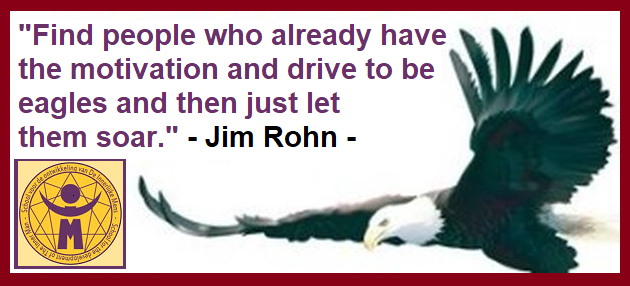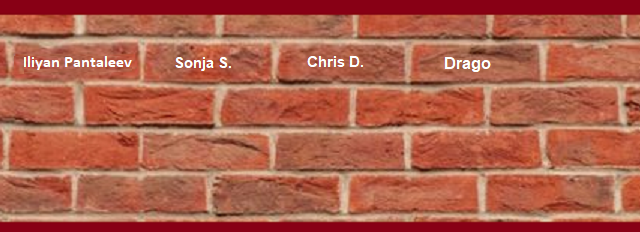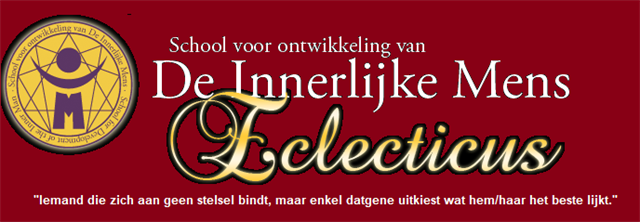This spring, Lockheed Martin is expanding operations to meet Ukraine’s demand for arms. In recent months, its Camden, Arkansas, plant won nearly a half-billion dollars in contracts for the High Mobility Artillery Rocket System (HIMARS) — doubling production targets and prompting Lockheed officials to consider adding a night shift.
Russia’s war in Ukraine has turned the HIMARS rocket launcher into a lethal symbol of U.S. innovation. Last year, Ukrainian President Volodymyr Zelenskyy presented President Joe Biden with a military medal from the captain of a Ukrainian HIMARS unit. The Arkansas Chamber of Commerce named it the “Coolest Thing Made in Arkansas!”
Camden’s brush with prosperity reflects a boom in NATO-bloc defense production. One Spanish munitions company, Expal, produced 280 tons of explosives at a single plant for Ukrainian forces last year. The German conglomerate Rheinmetall is even considering building a tank factory in Ukraine.
Since the 2022 Russian invasion, NATO leaders have advocated arming Ukraine, as images of besieged civilians and stoic soldiers confronting foreign aggression transfix observers. Industry voices argue that military aid is both a strategic necessity and moral imperative.
Yet, leading contractors — including Lockheed Martin and Rheinmetall — have notorious records of promoting corruption and hawkish policies that undermine peace. Many actively violate arms embargoes, exacerbating conflicts across the world, and previously aided the Russian war effort.
Ultimately, Western military exports to Ukraine reveal dangerous industry trends and a resurgent history of militarism. As military budgets rise, power has increasingly concentrated in the hands of defense officials with an incentive to seek conflict.
Cold Blaze
Since the formation of NATO in 1949, members have relied on foreign markets to reduce weapons costs and sustain their industrial base. Historically, fierce competition encouraged governments to tolerate staggering levels of corruption and illegal sales tactics. The Cold War blazed in the Third World, where superpowers competed to transform newly independent countries into clients, inflaming regional disputes and proxy wars.
By the 1970s, the arms trade was the uncontrollable fuel propelling globalization. In 1973, U.S. military aid to Israel triggered an Arab energy embargo, increasing the price of oil fourfold and flooring the global economy. To recover the petrodollars filling Middle-Eastern treasuries, NATO members sold massive quantities of arms to the region. Increasingly, oil producers and defense contractors bartered energy for weapons, fusing the two industries.
U.S. officials championed sales, while assuring corporations that they had “no objection to the arms-for-oil idea.” President Jimmy Carter previously drummed up business for Lockheed as governor of Georgia, before selling Iran a record $5.7 billion in weapons during his first year in the Oval Office. Eventually, sales precipitated an Iranian debt crisis, accelerating the 1979 revolution.
Amid the political chaos, Iraqi President Saddam Hussein invaded Iran in 1980, beginning a grueling eight-year war that NATO members stoked with arms. President François Mitterrand of France, whose brother directed 'Aérospatiale', vigorously promoted sales to Hussein, emphasizing that foreign clients were essential for defense contractors. “The French market would not suffice to keep factories operating, since we would not be able to make that policy profitable,” Mitterrand explained. By 1983, Iraq absorbed 40 percent of French arms production.
Most NATO members sold equipment to both sides during the war, which killed 680,000 people. French and U.S. policymakers illegally exported explosives to Iran, mobilizing proceeds to reportedly finance the French Socialist Party and covert operations in Nicaragua. From Britain, Prime Minister Margaret Thatcher exploited the regional buildup to seal what was then the largest weapons deal in history, while her son allegedly received commissions.
Ironically, Hussein invaded Kuwait in 1990 partly to pressure creditors into renegotiating the arms debt he accumulated over the previous war. Once more, NATO members turned a crisis into a business opportunity, overseeing a spike in regional sales. British officials called the war an “unparalleled opportunity” and a “vast demonstration … with live ammunition and ‘real trials,’” while flooding Iraq’s neighbors with arms.
Thus, the Cold War ended in flames. If NATO ensured peace in Europe, conflicts across the Global South repeatedly nourished its military muscle.
Revolving Wars
The end of the Cold War ushered a decline in Western military spending, initiating a painful process of industry consolidation. Lobbyists scrambled for new arguments to maintain a war economy. In 1992, Pentagon officials unveiled their latest grand strategy, declaring that the U.S.’s priority was “to prevent the re-emergence of a new rival.” The “no peer rival” policy justified maintaining an extensive military-industrial complex, while containing Russia and China, in order to preserve U.S. hegemony. One author, Lewis “Scooter” Libby, has owned defense stock and consulted for Northrop Grumman.
Meanwhile, arms makers led a movement propounding NATO expansion to secure new markets. Previously, Secretary of State James Baker promised Russian leaders that the alliance would move “not one inch eastward.” Yet The New York Times reported that businessmen regarded Central and Eastern Europe as “the next global arms bazaar.” Vice President Bruce Jackson of 'Lockheed Martin' became president of the U.S. Committee to Expand NATO, convincing legislators to extend the military umbrella over dinners of lamb chops and red wine.
After pushing the alliance eastward, Jackson led the Committee for the Liberation of Iraq, which spearheaded the drive for the 2003 invasion — inaugurating an era of soaring military budgets.
Lacking similar domestic demand, other NATO members remained heavily reliant on foreign markets, pursuing sales with unscrupulous zeal. France exemplified this alarming pattern. In 1995, Prime Minister Édouard Balladur financed his presidential campaign with kickbacks from arms deals. Eventually, a scandal ignited when the director of Sofremi revealed that the export organization’s middleman, Pierre Falcone, had “showered everyone with bribes for years.” Investigators concluded that dozens of officials and Mitterrand’s own son participated in illegal sales.
A string of arms scandals followed, embroiling the largest French defense conglomerates. In 2005, former executive officer Michel Josserand of 'Thales' announced that corruption was endemic, calling the corporation’s ethics code “hypocrisy pushed to its maximum.” He even claimed that the firm manipulated a UN program to sell arms to Iraq. Authorities also concluded that 'Airbus' dedicated a 250-person bureau to managing its global network of illegal payments, exposing the “massive practice of corruption within the company.”
Controversy equally dogged Germany and Britain. After notoriously pocketing arms kickbacks, Christian Democrats selected Angela Merkel as party leader in 2000 to signal a break with the past. During her tenure, investigators uncovered monumental bribery schemes at 'Siemens' and 'Rheinmetall', the largest German defense firms. Likewise, British and American officials fined 'BAE Systems' for corrupting Saudi leaders, even as the United States maintained a former Raytheon director as ambassador to Riyadh. In 2017, another industrial colossus, 'Rolls-Royce', paid a £671 million penalty after authorities uncovered “truly vast corrupt payments” and “egregious criminality over decades.”
As NATO pressed eastward, arms lobbyists escalated tensions with Russia, contributing to the outbreak of the Russo-Ukrainian War in 2014. By then, the industry had dashed hopes for a durable “peace dividend,” distorting economic development and corrupting public policy.
NATO Incorporated
While promoting NATO expansion, arms makers helped militarize Europe. In 2015, the European Commission created the Group of Personalities on Defence Research (GoP), a panel advising officials on security policy. Nine of the 16 members nurtured industry connections, including ties to leading defense contractors, such as Airbus and BAE Systems. Afterward, the commission established the European Defence Fund (EDF), justifying the weapons development program with arguments lifted from a GoP report. The initiative’s €8 billion military research and development budget for 2021-2027 is over 13 times the allocation for the previous budgetary cycle. By March 2022, the firms that the GoP represented had absorbed 30.7 percent of distributed funds — even though many faced recent corruption allegations.
To a remarkable degree, the EDF signified the industry capture of European security policy. By then, the commissioner overseeing arms development, Thierry Breton, was the former chairman of the defense giant Atos, while the previous director of the European Defence Agency, Jorge Domecq, was an Airbus lobbyist. Industry pressure convinced the European Union to cede control over intellectual property to private contractors. Incredibly, arms makers enjoy minimal oversight and a culture of official complicity. A European Ombudsman concluded that “there is no detailed assessment of the compliance of projects with international law.”
NATO-bloc military spending disproportionately enriches a small clique of corporations. On the eve of the 2022 Russian invasion, five companies alone – Airbus, Leonardo, Thales, Dassault Aviation, and Indra Systems — had received 75 percent of European Defence Industrial Development funds. Instead of competitors, contractors are shades of the same shadow. Edisoft and Naval Group form part of Thales, Thales forms part of Dassault, and Dassault forms part of Airbus. And the pattern peels on. In turn, foreign investment firms like BlackRock and Wellington Management own major shares of both European defense contractors and their American rivals.
Capital flows reflect the existence of a global military-industrial complex, as interlocking conglomerates collectively organize the defense market – turning public funds into private property. A small number of transnational corporations with the same shareholders shuffle contracts between enterprises, moving profits across borders, while claiming that military spending is a patriotic duty and national imperative. The intense concentration of economic power allows companies to ratchet up prices, stifle competition and extort new contracts from governments.
Since 2014, NATO has cited the Russo-Ukrainian War to justify the military buildup. Yet, between 2014 and 2020, one-third of EU members shipped weapons to Russia, authorizing over 1,000 export licenses despite a 2014 embargo. Top EDF recipients sent thermal cameras for tanks, navigation systems for fighter jets, armored vehicles, rifles and pistols — all while Russian forces annexed Crimea and spliced Ukraine into separatist republics.
Misery Abundant
Meanwhile, NATO members remain critically dependent on foreign markets, exporting violence across the globe. In turn, these conflicts perpetuate demand in a devastating feedback cycle. The Delàs Center for Peace Studies concluded that the EU shipped one-third of its defense exports to 63 countries in conflicts between 2003 and 2014. And these clients accounted for 75 percent of world refugees.
Yet the arms industry casts even refugees as threats and pretexts for profit. A pillar of the NATO military buildup, the Spanish conglomerate Indra advertises itself as a “pioneer” in “electronic warfare,” emphasizing its initiatives against undocumented immigrants. Last June, Spanish and Moroccan security forces targeted refugees trying to scale the border wall that it constructed at Melilla, a Spanish city on the African coast, massacring at least 23 civilians and injuring 200. Prime Minister Pedro Sánchez called the operation “well handled” (“bien resuelto”), before blocking a parliamentary investigation. Tellingly, the victims were from Sudan — a country that Spain illegally supplied with weapons during its civil war.
Above all, the Middle East remains the essential market for NATO members. U.S. and European states have long supplied Israelis with equipment to colonize Palestine, turning the Occupied Territories into a nightmarish arms laboratory. Israel remains the largest cumulative recipient of U.S. aid, at times receiving more money than Latin America and Sub-Saharan Africa combined. Western military exports foster both war crimes and impunity. After Israeli forces pounded the Gaza Strip in 2014, the United States nearly doubled Israel’s weapons package the following year. In May 2022, IDF soldiers murdered the American journalist Shireen Abu Akleh. Yet U.S. authorities accepted Israel’s version of events without question.
In a complex circular trade, NATO also supplies markets for Israeli weapons, importing drones and other sophisticated arms, while Israel helps develop cutting-edge technology such as the F-35 fighter. Relying on its defense sector for foreign exchange, Israel even sells arms to neo-Nazis.
Indeed, the search for profit engenders strange partnerships. The United States, France, Germany, and Spain supply arms to both Turkey and Greece, despite tensions between the two countries and Ankara’s ruthless war against Kurds. They also outfit the Saudi coalition attacking Yemen, inflaming a war that has killed over 377,000 people. Human rights groups such as Amnesty International report the abuse of NATO-bloc equipment in Peru, Colombia, Nigeria, Western Sahara, and other conflict zones, dramatizing that repression is a global business.
The Military Sublime
The Russian invasion in February 2022 triggered an outburst of solidarity with Ukraine, as NATO members shipped arms and accelerated the drift toward militarism. Within four days, 27 European states agreed to send €450 million in weapons, initiating successive waves of military aid. As fighting devoured Western munitions, defense stock prices soared, leading banks such as SEB to eliminate restrictions on arms investments.
That spring, contractors met in the Pentagon to discuss weapons for Ukraine and replenishing U.S. materiel. Elsewhere, President Joe Biden quipped: “We will speak softly and carry a large Javelin, because we’re sending a lot of those.” CEO Gregory Haynes of Raytheon, which manufactures the anti-tank missile, emphasized that Ukrainian demand was “a benefit to the business over the … coming years.” By absorbing old equipment, the war allows NATO members to not only boost military spending, but modernize their own arsenals.
As with Palestine, Ukraine has become a testing ground for Western technology. Seeking new equipment, Ukrainian leaders even advertise their country as an weapons laboratory to secure imports. “Ukraine is the best testing ground, as we’ll have the opportunity to test all hypotheses in battle and introduce revolutionary change in military tech and modern warfare,” Minister of Digital Transformation Mykhailo Fedorov argues. Western officials and contractors study the performance of systems, such as the HIMARS and M777 howitzer, while the prominence of unmanned aircraft has galvanized new drone research.
Beyond the rhetoric of solidarity, NATO’s considerations are overwhelmingly strategic and economic. Western leaders regard the conflict as a proxy war over Eastern Europe, exploiting tensions to pursue geopolitical supremacy and industrial regeneration. Many promote arms exports to safeguard “our strategic autonomy and sovereignty.” Senator Christian Cambon of France openly argues that officials must “make the necessary efforts, so that we will conserve our rank as the no. 1 Army in Europe!” Last summer, President Emmanuel Macron embraced “a war economy,” exhorting EU members to invest in defense and prepare for long-term hostilities.
This January, France promised to send AMX armored vehicles to Ukraine. Weeks later, the United States and Germany agreed to ship M1 Abrams and Leopard 2 tanks, signaling a qualitative leap in military aid. And this March, EU members concluded a €2 billion agreement to send 1 million artillery shells, while U.S. officials proposed a record-shattering $842 billion budget for the Pentagon.
In recent weeks, Finland announced plans to buy David’s Sling, an Israeli missile defense system, after joining NATO. That very day, one of the contractors, Elbit Systems, sponsored an industry seminar on the war. “If DoD [Defense Department] and industry can work together, we can move mountains,” waxed keynote speaker Christine Michienzi, a senior technology advisor for the Pentagon. “We’re mobilizing the defense-industrial base in a way that we haven’t seen since World War II.”
Arming Ukraine has become accepted wisdom, garnering support across the political spectrum and forging passionate commitments, as citizens across the world identify with battered Ukrainians repelling foreign aggression. Yet the arms trade’s underlying dynamics contradict simple narratives of solidarity. The very corporations and governments that direct the buildup previously aided the Russian war effort. And they still inflame conflicts across the Global South to sustain their industrial base and accumulate profits. The strategies they propound — ranging from the “no peer rival” policy to NATO expansion — not only foster war but commodify it.
Rather than peacemakers, industry leaders are modern warlords, instigating conflicts before turning them into sales pitches: spectacles of sublime terror. If solidarity with Ukraine is a moral imperative, the struggle for peace is too important to leave in their hands.
Source: 'Truthout' - April 12, 2023.

"Vind mensen, die in zichzelf zowel de motivatie als de aangeboren drijfveer hebben om aan hun Innerlijke Zelf te werken, en we zullen hen gidsen."
- DIMschool vzw, de énige gespecialiseerd in Zelfkennis, zijnde: het kennen van het Zelf -
--------------------------------------------------------------------------------------------------------------------------------------------------
En, voel jij je geroepen om Spiritualia te sponsoren?
Klik dan op deze link. Alvast bedankt!
Overschrijven kan ook via: IBAN: BE22 7795 9845 2547 - BIC: GKCCBEBB
- Indien je zo'n (bak)steentje bijdraagt, ook eventueel via een aankoop of een Zoek&Vind abonnement, mogen we jouw naam hieronder publiceren? Laat het ons weten! -

- Ook kan je dus in onze webshop iets aankopen, waaronder:
Archetypen vragenlijst
Kristallen schedels
Pendels
Purperen plaatjes
Wierook & Benodigdheden
Voor de 'Zoekers naar hun Innerlijke Waarheid' is er...: Eclecticus!
En, dan heb je nog ...
DIMschool biedt 10 interessante privé-sessies aan waaruit jij kan kiezen!
Dossier Zelfkennis: Over de Handleiding Pendelen van A tot Z
'Eclecticus': een korte introductie…
Meteorieten zijn hoogstwaarschijnlijk zo oud als onze planeet: eentje kopen?
Prachtige geode amethist schedel van 4 kg 340 gram zoekt een warme thuis.
Wat is jouw Archetype ? En, ken je ook die van jouw partner?
Een Cursus in Wonderen - A Course in Miracles: een introductie.
Interesse in Kabbala en de Boom des Levens?
Pssst! Jij, ja jij! Leren werken met Runen?… De handleiding is beschikbaar!
